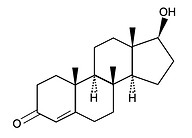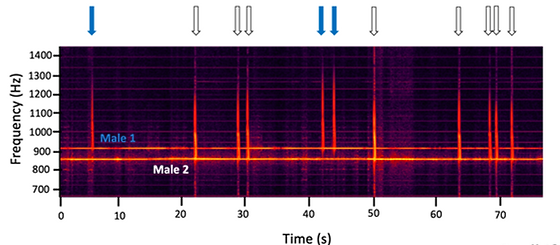RESEARCH
NEUROMODULATION OF MOVEMENT RECOVERY

I am currently working with Dr. Karen Mesce to investigate the neural and molecular mechanisms regulating crawling recovery following injury in medicinal leeches. Leeches regain coordinated movement without top-down input from their CNS through dopamine-dependent peripheral neural mechanisms. We will be employing a variety of advanced techniques such as IHC, optical-imaging, cell-tracing, spatial transcriptomics, and voltage sensitive dyes.


HORMONAL REGULATION OF REPRODUCTION

During my postdoc with Drs. Mark Bee and Alex Baugh, I investigated the causal links between gonadal steroid hormones and glucocorticoids and mating success in male Cope's gray tree frogs. Males have elevated steroid hormone levels during mating (see Baugh, 2024), but whether this relationship is cause or consequence of reproductive success is unknown. This project also explored the hormonal correlates of calling attributes in males.
EVOLUTION OF SIGNAL STRUCTURE AND USE
During my PhD, I examined variation in the structure and use of electrocommunication signals in South American weakly electric fishes. Electric knifefish modulate their electric organ discharges during social interactions to produce signals known as chirps. Apteronotids also show extensive species and sex variation in both social behavior and chirping (see Smith, 2013). For my dissertation, I investigated whether variation in either chirp structure or use varied with species' sociality and social context. I will continue studying signal function in my postdoc, where I plan to examine temporal patterns of male-male calling in boreal chorus frogs.

Exemplar chirps (frequency modulation vs time) from five different species of apteronotid knifefishes that vary in sociality: Apteronotus leptorhynchus (semi-social), Apteronotus albifrons and 'Apteronotus' bonapartii (territorial), and Adontosternarchus devenanzii and Adontosternarchus balaenops (gregarious).

Spectrogram with chirps from a recording of two A. albifrons males. Each horizontal line on the spectrogram represents the electric organ discharge frequency of one male over time. Vertical lines represent chirps or increases in frequency. Blue and white arrows indicate how each chirp was assigned to a male.
NEUROENDOCRINE MECHANISMS OF SOCIAL BEHAVIOR
I am also interested in how steroid hormones, monoamines, neuropeptides, and their receptors coordinate social phenotypes and communication (both signal production and perception). In my PhD work, I examined neuroendocrine mechanisms of behavior in electric knifefishes across social context, sex, and species' sociality at two different physiological levels. I used three species that varied in sociality: Apteronotus albifrons (territorial), Apteronotus leptorhynchus (semi-social), and Adontosternarchus balaenops (gregarious). First, I quantified plasma gonadal steroid and cortisol levels in response to social pairing. I also looked at variation in gene expression for several monoamine and neuropeptide receptors in two brain regions that process electric signals: the electrosensory lateral line lobe (ELL) and the torus semicircularis (Ts). As a postdoc, I hope to continue probing the neurobiological mechanisms of behavior by asking how the hypothalamus and pituitary mediate mating interactions and reproductive success in Cope's gray tree frogs.

Diagram of an apteronotid brain with electrosensory brain regions, the ELL and Ts, marked.
qPCR amplification plots from three genes of interest: serotonin 1A (5HT1AR) and 2C (5HT2CR) receptors and dopamine 2 receptor (DR2).

